FINESSE
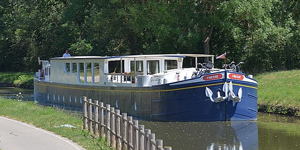
Southern Burgundy: River Saône and Canal du Centre
Up to 8 guests
Charters and Cabin cruises
Themed Cruises:
Bike, Family, Golf, Wine

Learn about the towns and villages along the Canal du Centre which is a French canal located in Southern Burgundy between the Saône and the Loire. This narrow, winding canal is a picturesque route of approximately 73 miles (112km) and has 61 locks. The Canal du Centre constituted the final link in the first inland-waterway route between the English Channel and the Mediterranean Sea.
Chalon-sur-Saône, an important port since ancient times, is at the confluence of the River Saône and the Canal du Centre. This once busy port, was a distribution point for local wines.
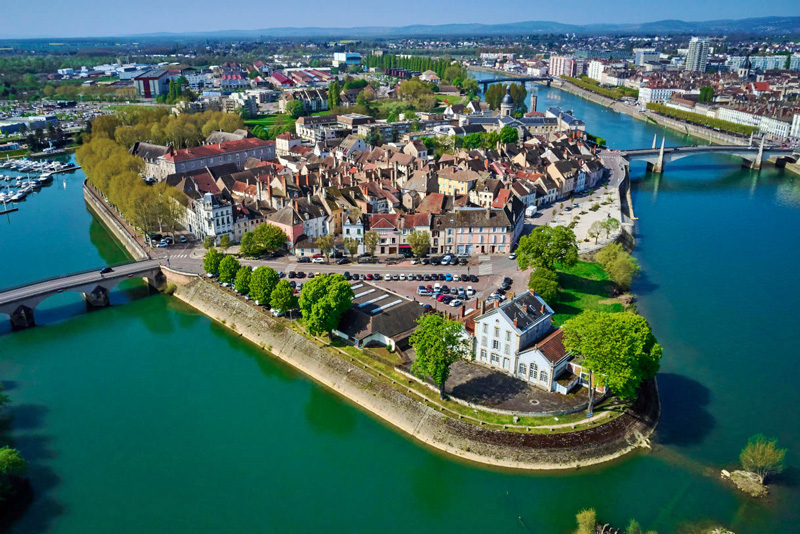
Chalon-Sur-Saône
Chalon is known as the birthplace of photography. Its most famous resident, Nicéphore Niépce (1765-1833), was a French inventor and one of the earliest pioneers of photography. Among his inventions was the Pyréolophore, one of the world's first internal combustion engines, which he conceived, created, and developed with his older brother Claude. There is a museum in the town that contains more than two million photographs and many artefacts such as cameras and other photographic equipment. Another famous resident of Chalon-sur-Saône is Dominique Vivant Denon (1747-1825) who was involved in the creation of the Louvre museum in Paris, converting the former royal palace into a museum after the French Revolution. In the late 19th century, copper and iron works were the town's main industry. The large engineering works of Petit-Creusot, a branch of those of Le Creusot, manufactured heavy industrial items.
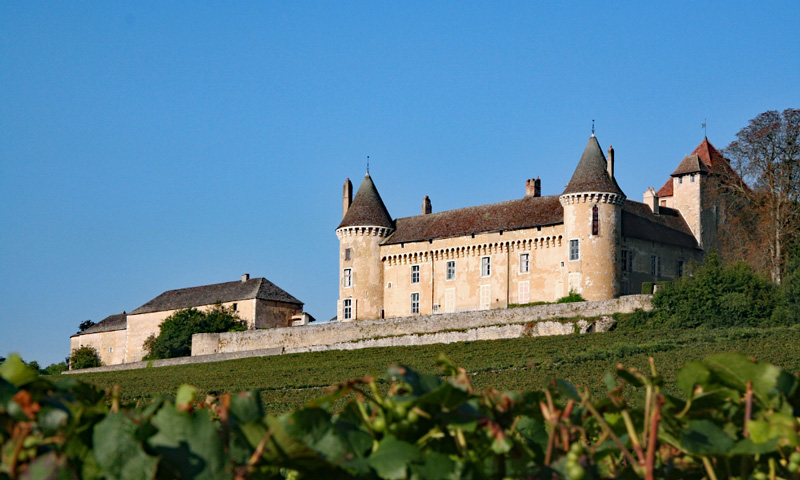
Château Rully is a family residence located in the heart of a vineyard.
Rully is a quaint Burgundian village with a long history. It is full of charming old houses, a church with an elegant bell tower, and a château which has been in the same family for six centuries. Rully was granted its AOC in 1939 and now produces red wines (Pinot Noir) and white wines (Chardonnay) with both appellations Village and Premier Cru. Since the early 19th century it has also been an important center for the making of Crémant de Bourgogne, a sparkling wine made using the Méthode Traditionnelle which some say tastes as good as Champagne produced 100 miles to the north.
Remigny is a small commune on the banks of the Canal du Centre. Surrounded by vineyards, those within its boundaries belong to the celebrated appellations of Chassagne-Montrachet and Santenay. Remigny itself does not have an appellation.
Santenay, a small wine village, has some beautiful monuments and other buildings to enjoy during beautiful walks. Santenay's AOC produces around 85% red and a little over 15% of white wine. There are 12 premier crû vineyards located in its boundaries. The 13th century Santenay Château, once belonging to Burgundy Duke Philip the Bold, was built on an 11th century Roman fortress, revamped in the 12th and 16th centuries, and is now associated with a wine estate on the Burgundy Grands Crûs route. Its beauty lies in its charming Burgundy glazed tile roof, typical of the region. The estate produces both chardonnay and pinot noir wines.
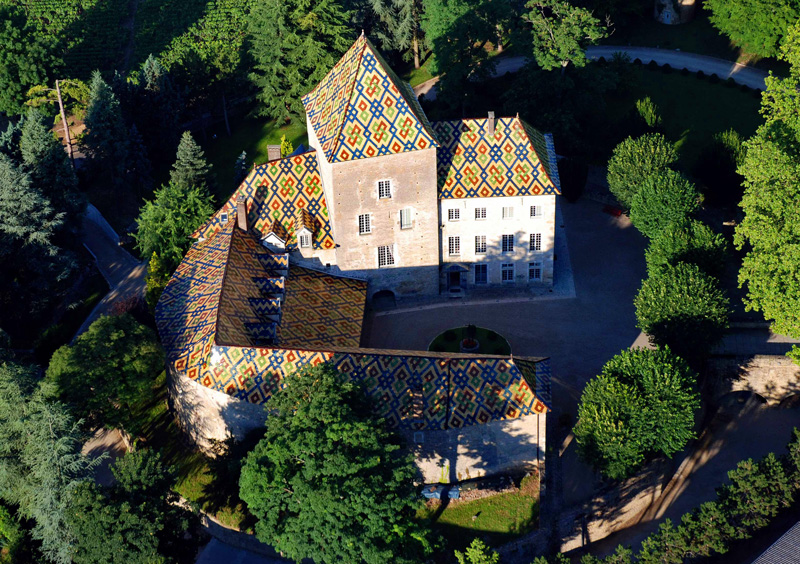
Santenay Château
Santenay's Saint-Jean de Narosse church is classified as a Historic Monument. Built from 1220 onwards, it started out as a chapel before becoming a parish church. the late Romanesque style blends harmoniously with the Gothic style of the choir. Other sites of interest are a spa center that offers the benefits of the lithinated waters of the town's springs, the 25-foot (8m) Sorine windmill located in the middle of vineyards and is the only windmill in the region, and many hiking trails.
Saint-Julien-sur-Dheune is a small community of houses and farms. In the center of the village is a port for pleasure craft and hotel barges. The population of this village is about 240 inhabitants. The ancient Benedictine priory of Saint-Julien was founded in the 11th century and was once the focal-point of the village. By the 17th century the nuns had left the priory, and it was ultimately destroyed during the French Revolution. Today the only surviving trace of the priory is the church, which has been restored.
Initially an inn and some farms, the settlement of Montceau-les-Mine is an old mining town. The construction of the Canal du Centre between 1783 and 1791 and the establishment of the Mining Company in 1833 were catalysts for rapid development. With coal mining producing a thriving economy, the town experienced industrial expansion and an exceptional growth of its population, reaching nearly 29,000 inhabitants in 1901. In 1943, it was celebrated as being one of eighteen French municipalities decorated with the Resistance Medal, established to help “recognize remarkable acts of faith and courage that, in France, the Empire and abroad, have contributed to the strength of the French people against the enemy and their accomplices from 18 June 1940”.
The town of Paray-le-Monial is mainly known for its Romanesque church of the Sacré-Coeur ("Sacred Heart") and as a place of pilgrimage. The area's primary industry is agriculture in particular beef cattle farming. The area is known for its charolais cattle.
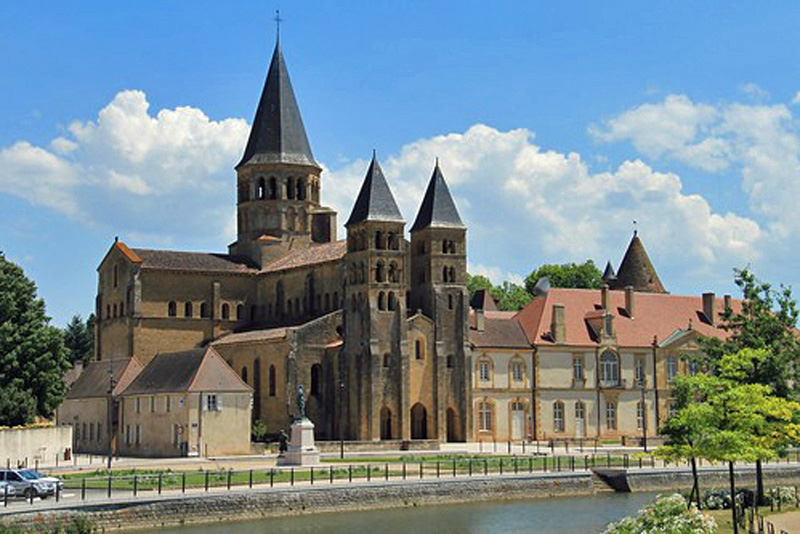
Basilica of Paray-le-Monial
The Romanesque Basilica of Paray-le-Monial is a popular landmark and one of the most visited religious sites in France. The church was built in the 12th century by Hugues de Semur, the most important of the abbots of Cluny, on the site of a 10th-century monastery founded by Count Lambert of Chalon. It was a small-scale version of the Abbey of Cluny. The Basilica was completed in the 14th century, although some sections were added in the 18th century or renovated in the 19th century. It is the best conserved example of Cluniac architecture in Burgundy. While it may seem rather austere from the outside, on a closer look you will discover a beautiful Romanesque gate on the north side, an abundance of decorative sculptures portraying plants, legendary animals, birds, foliage, lions, bunches of grapes, etc, across the capitals of 365 columns, and all bathed in the golden light streaming through the nave.
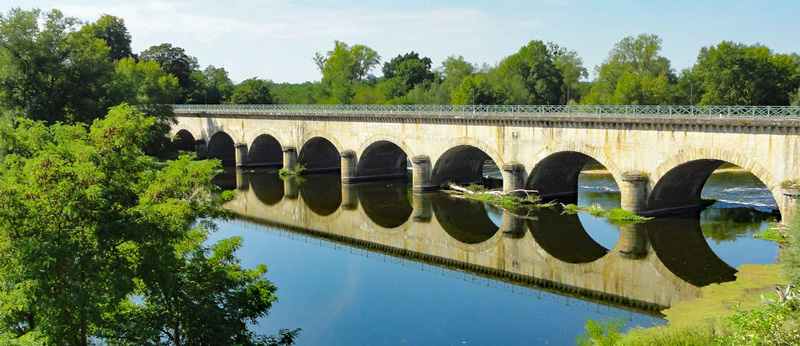
Digoin Aqueduct
Digoin is near the junction of the Canal du Centre and the Canal Latéral à la Loire. Its aqueduct allows the Loire Canal to cross the River Loire and was one of the first major aqueducts in France. It was designed by the French engineer Pierre-Alexandre-Adophe Jullien and measures 800 feet (243m) in length. The aqueduct is supported by 9 pillars and 11 arches. It was opened to navigation in 1838 at the same time as the Canal du Centre.
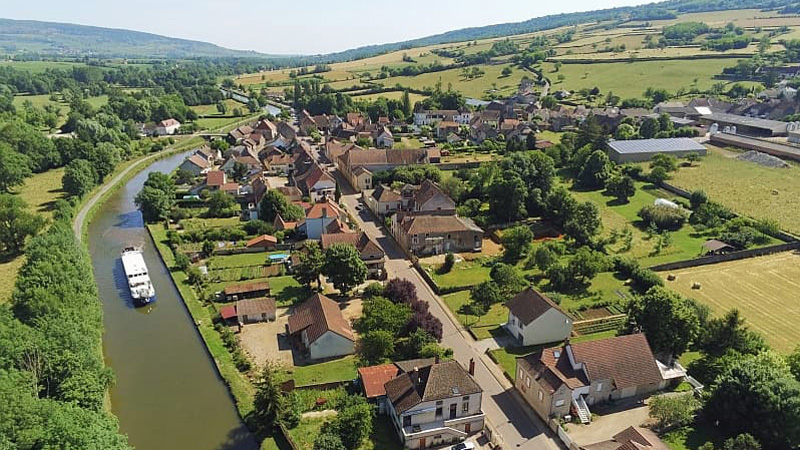
Enjoy the Canal du Centre on a barge cruise aboard Finesse

Southern Burgundy: River Saône and Canal du Centre
Up to 8 guests
Charters and Cabin cruises
Themed Cruises:
Bike, Family, Golf, Wine
HOME > REGIONS > France > Canal du Centre: Towns and Villages